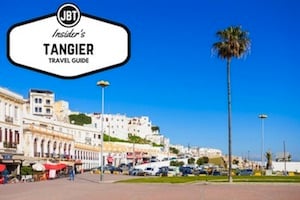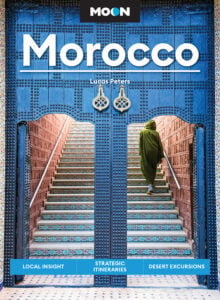
Zagora is a common pitstop on the way to the Sahara Desert. It is the last big town you’ll hit on your way to Erg Chigaga, one of the two major dunes in the Moroccan desert.
Although most travellers won’t spend more than a night in the Zagora oasis, it’s a destination in its own right! With few signs of modernization, it’s a great place to experience traditional Moroccan life in outstanding scenery among some incredibly unique sites.
Here Are Our Top 7 Reasons To Visit Zagora:
The Vast Palm Grove
If you like palm trees, you’re in luck! Family-owned gardens filled with date palms stretch out for miles between the city and the river. Several paths run between the gardens, making it ideal for a wander.
Over 30 varieties of dates grow in the region, harvested from September to November. The town is renowned for having the best dates in the country. Their deliciousness is attributed to the hot, dry climate where temperatures can soar to 50 C (120 F) in the summer.
Draa River
The Draa River, Morocco’s longest river, spans 1,100 kilometres (683 miles). It passes through Zagora, though it’s not always full of water. A dam in Ouarzazate halts the river’s flow so there is only water further south when it is opened.
During the summer, the river is often full of water. It’s typical to see children swimming in it while adults usually flock to its shores in the evening to sit atop a newly-built boardwalk.
Biggest Souk in the South
If you want to experience a traditional souk (a Moroccan market) Zagora is the place to be! Every Sunday and Wednesday vendors flock to the marketplace just outside the city center to sell their goods. The massive souk is divided into different sections. Fruits, vegetables, meat and live animals are sold alongside traditional clothing, local handiwork, toiletries, kitchenware and furniture. An attached flea market sells used items, such as bicycles, tents and clothing, which are typically brought over from Europe. During the autumn date season, there is also a giant date market.
Street Art
Zagora could soon rival the colorful streets of Asilah in the north. Over the past year, a local association recruited young people to paint the streets, adding bright hues to residential neighbourhoods next to the city center. Intricate paintings of the region, often featuring palm trees and traditional Kasbahs, now grace many street corners. A stroll through the city is sure to uncover some hidden gems!
Watermelons
You may not expect to find watermelons growing in the desert but Zagora is known for them. In recent years, previously uncultivated land in the surroundings has proved to be prime soil for growing these melons.
Since the climate is warmer than in other regions, the watermelon season starts early. Extensive irrigation is necessary due to the lack of rain. Harvest begins in April, the earliest in the country. In April and May, buyers from across the country flock to the town, gathering in the main square to negotiate a good deal. An empty lot fills up with trucks keen to provide transport. Pop-up stalls selling food and drink are open day and night to provide sustenance to those waiting for a deal to be struck.
If you’re visiting Zagora in the spring, local watermelons should be part of your daily diet.
Road to Timbuktu Painting

How far is to Timbuktu? From Zagora, it’s a mere 52 day journey by camel. Or so claims the famous sign erected at the west-end of the city.
For centuries, a procession of camels was the means of transport from Marrakesh, though the Sahara Desert, and on until they reached Timbuktu in Mali, 52 days from Zagora. Zagora was a popular stop along this desert route known as the “Salt Trail.” Many a Moroccan Sultan made his wealth from these caravans, which transported dates, silver, gold, slaves, handcrafted works, and, of course, salt.
The original painting has been replaced by successive copies through the years, though the camels and nomads depicted today are historically accurate.
Dinosaur Park
Off the main road past the city center, two dinosaurs stand tall behind the gates of a small park. The T. Rex and Triceratops statues were created by local artist Amer Oubani, who wanted to immortalize some of the region’s cultural heritage. Morocco is rich in minerals and fossils. Several important dinosaur fossils have been discovered.

“I wanted to share with children the geological history of Morocco,” Amer says.
The dinosaur duo was originally a quintet, accompanied by an Allosaurus replica, another big fossil and a trilobite. However, these were destroyed by children playing in the park. Amer hopes to recreate them someday.
About the Author
 Sandrine Ceurstemont is a freelance science writer currently based in Morocco. Her interests range from bizarre animal behaviour to the unknowns of the vast world underwater to new robots. Since living in Morocco, she has become interested in local innovations and has written about one of the world’s largest solar power plants in Ouarzazate. She frequently writes for New Scientist and the BBC.
Sandrine Ceurstemont is a freelance science writer currently based in Morocco. Her interests range from bizarre animal behaviour to the unknowns of the vast world underwater to new robots. Since living in Morocco, she has become interested in local innovations and has written about one of the world’s largest solar power plants in Ouarzazate. She frequently writes for New Scientist and the BBC.
[wpdreams_rpp id=0]








